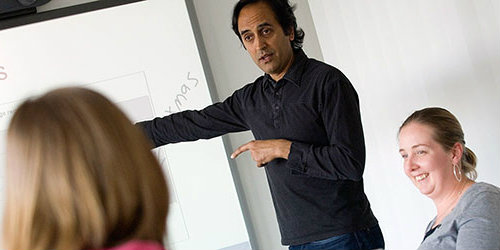Making professional bodies more professional
New governance structures and practices improve professional competence, strategic decision-making, and services in professional bodies across the UK.
Research has encouraged professional bodies across the UK to adopt new governance structures and professional development practices.
The result is better strategic decision-making, higher levels of professional competence and better services for end users.
The impact of this has been widespread, helping organisations such as the Institution of Occupational Safety and Health and the Chartered Institute for Archaeologists to pioneer new practices and setting a template for other professional bodies to follow.
Finding a more effective way to lead
The University of Bristol’s work in this area is directed by Professor Andrew Friedman, Emeritus Professor in the Department of Management. The research is carried out through the Professional Associations Research Network (PARN), which Friedman established at the University in 1998, and has helped to create a new model of governance that changes the way professional bodies make key decisions.
“We wanted to address a longstanding problem with the traditional model for running a professional association, which was based on high involvement of volunteers who would establish large councils and complex committee structures,” explains Friedman. “This gave members a strong sense of ownership of their associations, but it often also meant organisations were burdened by slow and poorly coordinated procedures. This in turn affected decision making and their ability to set out a clear strategy.”
The research carried out through PARN led to the development of a more efficient and effective ‘Cupped Hands’ model. The new Cupped Hands approach suggested an executive board as the governing body supported by a much larger assembly to provide democratic representation and a forum for professional debate.
Actively driving change
Crucially, PARN’s involvement did not end with the creation of the idea; it has also been very much involved in educating the market and rolling the concept out in professional bodies throughout the UK.
“What you have to remember is that the original PARN research on governance was undertaken when most professional bodies were governed by large representative councils,” says Freidman. “Getting them to give up sovereign power in favour of a smaller strategic Board usually requires more than logical argument in print, it requires evidence of what others are doing and in many cases explanation in person.”
This was achieved through the triennial benchmarking surveys on PARN members and by presentation of the results and the Cupped Hands Model at PARN conferences and at Council meetings.
As a result, many associations have reported that PARN has provided them with a clear way ahead. According to one, the Association of Business Recovery Professionals, this has been achieved through a combination of ‘reassurance, reinforcement and inspiration’.
Overall, according to the most recent 2012 PARN survey a quarter of UK professional bodies now use Cupped Hands, and more are joining the movement all the time.
Recent converts include Chartered Institute of Purchasing and Supply and the Chartered Institute for Archaeologists. Some, such as the Institution of Occupational Safety and Health, have now been using the model successfully for over 10 years.
Improving Continuing Professional Development (CPD)
In addition to this important work on governance, PARN has also influenced a change in the way that professional bodies use Continuing Professional Development (CPD) processes to track the skills and experience people gain as they work.
“Our main impacts have been to encourage professional bodies to make CPD policies mandatory and measure them by outputs rather than inputs, thereby raising competency and evidence for it among millions of professionals” says Friedman
As result of this work, adoption of compulsory CPD has increased from 13% to 28% amongst UK professional bodies and output-based CPD from 15% to 31% between 2003 and 2012.
Overall, the impact of PARN research and networking activities is far wider than even this direct evidence suggests. According to Freidman, it’s the long term impact on the way that professions provide services to their end users that will be the most telling.
“Ultimately, if you’re a client, patient, employer or so on, you’re going to benefit by receiving more up-to-date and competent professional services” says Friedman.

